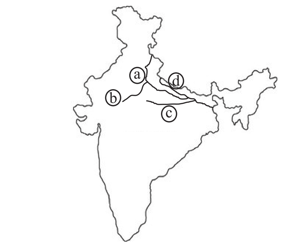The Indus Water Treaty was signed in the year , between India and Pakistan to use the water available in the Indus River and its tributaries.
Important Questions on Drainage System
Which of the following are the tributaries of the Brahmaputra river?
(I) Dibang (II) Kameng (III) Lohit
Select the correct statements
(a) Kosi river is sorrow of Bihar
(b) Parrot is the national bird of India
(c) Maruti Industry is situated in Delhi
(d) Varanasi is situated on the bank of river Ganges
Select the correct statements –
a) Mount K2 is the highest peak in India
b) Sunderban is in West Bengal
c) Nuclear disaster is very dangerous for the world.
d) Cactus plants found in evergreen forest
Geological structure, physiography, and precipitation regimes influence the evolution of drainage patterns. India with its diversity in the above-mentioned attributes showcases a variety of drainage patterns across regions. Match the following drainage patterns found in the regions given below and select the correct codes:
| Drainage pattern | Region |
| A. Central | I. Narmada Basin |
| B. Radial | II. Godavari Basin |
| C. Dendritic | III. Loktak |
| D. Trellis | IV. Amarkantak |
| V. Aravalli |
Which of the following rivers meet Ganga from South direction in Bihar?
A. Kosi
B. Son
C. Gandak
D. Ghaghra
Arrange the following rivers in the correct sequence as given in the map.

I. The Beas flows into Pakistan and joins Sutlej.
II. Sutlej and Indus are examples of antecedent drainage.
III. River Luni drains into Sambar Lake which is an example of inland drainage.
IV. The rivers flowing from the western slopes of Western Ghats are swift and have a short course

